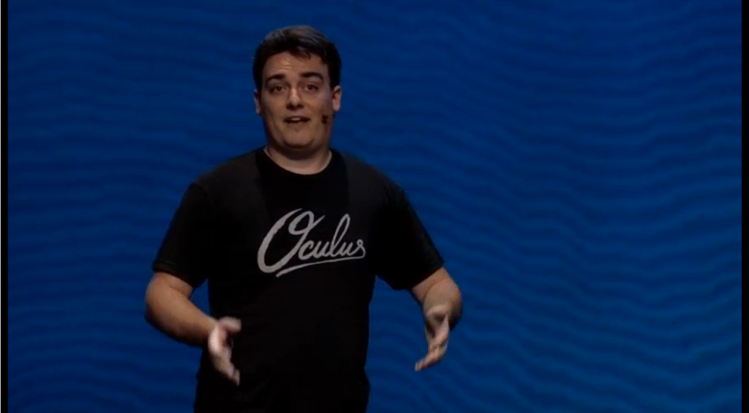The big mystery behind Oculus’ $599 preorder fiasco was how a savvy company like Oculus, owned by a savvier company called Facebook, could fail so spectacularly at setting its customers’ expectations. While Oculus feigns Mr. Magoo-like ignorance, I believe it was all a brilliant Zuckerbergian machination.
Put yourself in Oculus’ shoes. You have a hyped product in the Rift VR headset that you want to sell for $600. Launch is weeks away, and all your fans think that you’ll price between $350 and $450. What are your options?
Option 1: Announce the price ahead of time
You could reveal the $600 price point at a keynote event. This gets the negative publicity out of the way and gives you a clear channel to justify the price. When launch day arrives, you’ll be safe. This approach would be a mistake.
By revealing a high price ahead of time, you’ll be at the mercy of the competition. HTC and Sony will consult their accountants and spoil first-day sales by announcing a lower price for their upcoming headsets. Sony has done this twice before.
Option 2: Set broad expectations ahead of time
The sensible approach would be to aggressively calibrate expectations without revealing the price. You’ll remind people that the early development kits were cobbled together and heavily subsidized. You’ll say you can’t build the product of your dreams for $350-$450. You’ll “leak” a $700 price tag to make the real price a steal. Sony will stay in its corner, and your customers will be child-proofed against sticker shock.
Many marketers and PR agents would recommend this strategy. It’s business 101. But Oculus/Facebook is not a 101 company.
Option 3: Stay silent and maximize sticker shock
Staying silent and not calibrating expectations is a Dark Side maneuver that turns negative customer energy into cash.
Silence means that the maximum number of people will show up to your preorder event, regardless of their budget.
Silence means that everyone who shows up will be emotionally invested in buying a Rift. Had you hinted at a higher price earlier, some might have taken a “wait and see” approach instead of staying up all night to watch VR videos on YouTube.
Silence means you won’t give people time to think. Day one orders are fueled by adrenaline. Big countdown! 1 per customer! “Gogogogo” as Palmer Luckey tweeted. You won’t snare all the budget-conscience consumers, but you’ll get enough of them.
Silence means a firestorm of negative PR. But it’s positive, negative PR. “Hey everyone! This cutting-edge product I really wanted is more expensive than I thought it would be!” Oh no, please, say anything but that!
Don’t worry, silence is quickly forgiven. VR enthusiasts roared when Oculus “sold out” to Facebook. That lasted a week. And if anyone knows how meaningless customer revolts are, it’s Zuckerberg, who’s made a billion dollars by telling users to chill out. You’ll apologize and play dumb in the short term as you bank sales and PR to solidify your market position for the long term.
Oculus is famous for its grassroots engagement. Was it really deaf to its fans’ price expectations? Facebook is a model of business competence. Did it really not think its pricing-reveal through? Let’s give them both some credit and applaud their bold and slightly villainous use of Sticker Shock as a marketing tool.
[Thanks to Ming Zhang, whom I credit as coauthor.]
Adam Ghahramani is head of digital product for a creative agency in New York City. Find him at adamagb.com or make friends on Twitter (@adamagb).
VentureBeat's mission is to be a digital town square for technical decision-makers to gain knowledge about transformative enterprise technology and transact. Learn More

